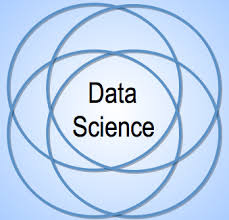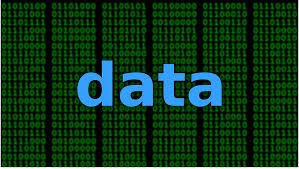The post Why you need to learn Python? appeared first on Magnimind Academy.
]]>Key reasons to enroll for Python training
![]()
Here’re the most important reasons you should learn this high-level, general-purpose programming language.
- Use in data science: You’re probably aware of the fact that data science is being considered one of the most respected, prominent, and attractive career paths in the tech field these days. By completing a Python course you’ll be able to fuel your data science career as the language comes with a great number of frameworks and libraries such as NumPy, PyBrain, PyMySQL, SymPy etc that would make your job as a data science professional relatively easier.
- Use in artificial intelligence and machine learning: Similar to data science, Python is also being heavily used in machine learning as it helps to build algorithms utilizing statistics in order to enable computers to perform various actions. Some of the major Python modules that help in machine learning include Scikit-learn, Theano, Tensorflow, among others. With the help of libraries like Keras, you’ll be able to manage neural network experimentation as well.
- Simplicity: One of the biggest advantages of learning Python is its high simplicity. When you’re a beginner in coding and programming, generally you don’t want to begin with a language that comes with weird rules and tough syntax. Python isn’t only simple and readable, but it easier to setup as well as you don’t have to handle any compiler issues like C++ or classpath problems like Java. All you need to do is install Python and start exploring it.
- Robust community: Regardless of the language, a community always plays a highly crucial role when it comes to learning it. Python comes with a massive community that’ll always be there to lend you a helping hand whenever you get stuck with one or multiple issues. Today, you can easily find the solution of any of your Python related problems within minutes by doing a simple Google search.
- High prospect: As the language is growing steadily and is being adopted by a significant number of tech giants as their primary language, it makes lots of sense to obtain a Python certification in order to make your career future-proof. It’d not only make job-ready quickly but will accelerate the career growth as well.
Conclusion

Put simply, by completing a Python course you’ll never have to face a shortage of options to utilize your skills. And since a lot of tech giants rely on the language, you’ll always be in a position to make good money as a Python certification holder.
. . .
To learn more about python, click here and read our another article.
The post Why you need to learn Python? appeared first on Magnimind Academy.
]]>The post Where is Python used in the real world? appeared first on Magnimind Academy.
]]>If you’re planning to get enrolled in a Python course or online Python training program, knowing some real-world applications of Python would help you choose which specific field you want to focus on for your career. Here are the top three applications of Python:
1- Web and Internet Development
![]()
Using Python, you can easily develop web applications rapidly. Python has a number of libraries for internet protocols like XML and HTML, e-mail processing, JSON, IMAP, FTP, etc. You can even use the following libraries for a range of functions:
- BeautifulSoup – for parsing XML and HTML documents
- Requests – a client-side HTTP library
- Paramiko – For executing the SSH2 protocol
- Feedparser – for downloading and parsing Atom/RSS feeds
- Twisted Python – for asynchronous network programming
With widely used Python frameworks like Django, Pyramid, and Flask, you can enjoy unparalleled convenience, scalability, and security when working on web development compared to starting website development from scratch. With Python, you can also get microframeworks like Bottle and Flask. You can even write CGI scripts and get advanced CMSes (content management systems) such as Django and Plone CMS.
2- Machine Learning and Artificial Intelligence
![]()
Those eyeing a career in data science, machine learning (ML), and AI (Artificial Intelligence) often take up a Python certification program to fast-track their career. Apart from being extremely user-friendly and easy to earn, Python has multiple libraries that offer support for these domains. Some of these are:
- TensorFlow – an end-to-end Python ML library for performing high-end numerical calculations.
- Scikit-learn – a well-known open-source Python ML library with a wide range of clustering, classification, and regression algorithms.
- Keras – a leading open-source Python library for building neural networks and machine learning projects.
- Theano – a renowned scientific computing library that lets you classify, optimize, and assess mathematical expressions that deal with multidimensional arrays.
- PyTorch – a production-ready Python ML library with outstanding applications, examples, and use cases supported by a robust community.
NumPy, Seaborn, and Python Pandas are some other libraries that you can use.
3- Game development
![]()
Several interactive games (like Disney’s Toontown Online, Civilization-IV, Vega Strike, etc.) and 3D graphics have been developed using Python. Libraries such as PyGame (that provides functionality via computer graphics and sound libraries) and PySoy (a 3D game engine that supports Python 3) as well as frameworks for game development like PyGame and PyKyra make game development an easy and quick job.
Final words

Education, business (e-commerce and ERP systems), software development, desktop applications, and database access are some other domains where you’ll find the use of Python. So, take your pick from these fields of Python applications when you enroll for a Python certification program.
. . .
To learn more about python, click here and read our another article.
The post Where is Python used in the real world? appeared first on Magnimind Academy.
]]>The post Why Python is Essential for Data Analysis? appeared first on Magnimind Academy.
]]>![]()
How Python is used at every step of data analysis
- Numpy and Pandas: Imagine staring at a long Excel sheet with hundreds of rows and columns, from which you want to derive useful insights by searching for a specific type of data in each row and column and performing certain operations. Since such tasks are extremely time-consuming and cumbersome, Python can come to your aid. With Python libraries such as Pandas and Numpy, you can use parallel processing for such high-computational tasks, which makes the job faster and easier.
- BeautifulSoup and Scrapy: Using BeautifulSoup, you can parse and extract data out of XML and HTML files. On the other hand, Scrapy – which was originally designed for web scraping, can also be used as a general-purpose web crawler or to mine data using APIs. Since the necessary data isn’t always readily available, you can use these Python libraries to extract data from the internet, which would help in data analysis.
- Seaborn and matplotlib: Instead of seeing a lot of data jumbled on a screen, it’s much easier to visualize the data in the form of pie-charts, bar graphs, histograms, etc. Such pictographic representation or visualization of the data helps in deriving useful insights quickly and easily. Here again, Python libraries can come to the rescue. Using Seaborn (which is a matplotlib-based Python data visualization library) that provides you with a high-level interface for drawing informative and attractive statistical graphics, you can easily visualize data and draw useful insights. Apart from being equipped with beautiful default styles, the statistical plotting library of Seaborn is also designed to work extremely well with the Pandas dataframe objects.
In addition, using Python would mean having scikit-learn (a machine learning library), which would help in complex computational tasks involving probability, calculus, and matrix operations over thousands of columns and rows. For data analysis involving images, OpenCV (which is an image and video processing library used with Python) can help.
. . .
To learn more about python, click here and read our another article.
The post Why Python is Essential for Data Analysis? appeared first on Magnimind Academy.
]]>The post Why is Python a language of choice for Data Scientists? appeared first on Magnimind Academy.
]]>What makes Python ideal for data science?
![]()
Here’re the key reasons why Python is being considered among the fastest-growing languages across the world.
- A complete package: Apart from being a general-purpose language, Python is tailor-made for every data analysis task. Data scientists need to use lots of algorithms for which the language is tailor-made as well.
- Easy implementation: For any data scientist it’s crucial to understand the language before going into intricate details of artificial intelligence or machine learning. Since Python is popular as a beginner’s language and doesn’t come with a steep learning curve, they don’t need to think about spending time on learning how to code using this language. Python programming language is popular for making programs work well with the minimal lines of codes possible. This simplicity is one of the biggest factors that have helped Python achieve this place.
- Libraries and scalability: All the libraries preferred by data scientists are available in Python. It also comes with a significant number of exclusive libraries. In addition, Python has become the best scalable language as one can develop concrete applications with ease. This feature is ideal for data scientists working to develop certain data analysis applications and models.
- Massive community: Python is accompanied by a robust community. This community is highly cooperative and there’re people who’re making the job of data scientists easy by helping them in different ways. If you’re a data scientist and experiencing some issues related to Python, most likely you’ll get the answer by presenting your query to a Python
Apart from all these, the ability to perform machine learning tasks is probably the biggest factor that has given Python programming language a solid edge over its competitors. It’s equipped with almost all the packages a data scientist may ever need. From scientific computing and statistical modeling to linear algebra and symbolic algebra, and many more – one can find the required packages readily available.
Keeping the above advantages of Python in mind, it can be said that it has become imperative for aspiring data scientists to obtain a Python certification. As a Python certification holder, you’ll be able to add tremendous value to your resume and to make the path of becoming a data scientist somewhat easier than those who don’t. In addition, if you’re looking to switch your career and step into the field of data science, it’ll be easier to demonstrate that you’ve got the requisite knowledge to manage various data-related projects when you’ve got a Python certification. And finally, as a certified Python professional, you’ll be able to get better jobs coupled with bigger salaries.
. . .
To learn more about data science, click here and read our another article.
The post Why is Python a language of choice for Data Scientists? appeared first on Magnimind Academy.
]]>The post What are the differences between data scientist and data engineer? appeared first on Magnimind Academy.
]]>Recently, a lot has been discussed and written about the differences between various roles in the domain of data science. Among others, the ones that have got the spotlight on them are those that discuss and debate the differences between data scientists and data engineers. If you are wondering what triggers this tremendous interest in these roles, a change in perspective that has been felt over the years could be the driving factor.
If you step back a couple of years ago, you will find that the predominant focus was on retrieving precious insights from data. As companies and organizations started making data-based and data-driven decisions, which brought several benefits their way, the significance of data management started to sink in the industry – slowly but surely. This also made the interested parties realize that the quality of data was important to derive useful insights because it’s the principle of “Garbage In, Garbage Out” that works in the domain of data science too. Even if you are capable of creating the best models, your results are likely to be weak and ineffective in case your data isn’t qualitative. And this was what brought the role of the data engineer under the spotlight.
According to Gartner, merely 15% of big data projects ever make their way into production. According to domain experts, one of the chief reasons behind such failures is due to the inability to build a production pipeline, which is one of the principal tasks of a data engineer. In the modern age of analytics, data scientists get most of the spotlight and attention. However, the roles played by data engineers are equally important, though they are often overlooked. It’s important to realize that data science (and even data analytics) would fail to flourish if no data engineering workbench exists. If you don’t believe it, you can consider what Glassdoor’s records say.
According to Glassdoor’s data in 2018, the number of job openings earmarked for data engineers was almost five times more than that for data scientists. Elsewhere, one may find data scientist jobs exceeding the number of data engineer jobs though some say it could be because numerous organizations don’t always (or are unable to) draw a distinct line between a data scientist and a data engineer. Thus, they end up posting jobs for the former whereas in reality, the jobs should have been seeking data engineers instead. Such actions on the part of organizations are perhaps triggered by their ignorance of the significant differences between data scientists and data engineers. Many reports have revealed that the majority of organizations require more data engineers than data scientists on their team. So, the question comes to this – what exactly is data engineering and how’s the role played by a data engineer different from that played by a data scientist.
Let’s dig a little deeper to answer the questions and find out the differences between data scientists and data engineers.
1- Who is a data engineer?
![]()
S/He is a professional with specialized skills in creating software solutions around Big Data.
Another way of defining a data engineer is that s/he is an inquisitive, skilled problem-solver, who loves both data and creating things that are useful to others. Thus, along with data scientists and business analysts, data engineers form an integral part of the team effort that converts raw data in ways which offer organizations useful insights and provides them with the much need competitive edge.
To understand what the role of a data engineer is, it can be said that this professional is someone who builds, develops, evaluates and maintains architectures like databases and large-scale processing systems. In contrast, a data scientist is someone who cleans, organizes, and acts upon (Big) data.
It’s the job of data engineers to suggest and at times, even implement ways to improve data quality, efficiency, and reliability. To handle such tasks, they need to utilize a range of tools and languages to blend systems together or try to track down opportunities to get hold of new data from other systems, which can help system-specific codes, for example, to act as the basic information in advanced processing by data scientists.
A data engineer will also need to make sure that the architecture that’s in place is capable of supporting the needs of the data scientists as well as the business/organization and its stakeholders.
In order to deliver the required data to the data science team, it will be the responsibility of the data engineers to develop data set processes for data mining, modeling, and production.
2- Key differences between data scientists and data engineers

With respect to skills and responsibilities, you’ll find considerable overlapping between data scientists and data engineers. One of the key differences between data scientists and data engineers is the area of focus. For data engineers, the emphasis is on creating architecture and infrastructure for data generation. On the contrary, the focus of data scientists is on advanced statistical and mathematics analysis on that generated data.
Though the role of data scientists demands a constant interaction with the data infrastructure that the data engineers have created and maintained, the former isn’t responsible for that infrastructure’s creation and maintenance. Rather, they can be called the internal clients, whose job is to perform high-level business and market operation research to spot trends and relations, which in turn need them to use an array of sophisticated methods and machines to interact with the data and act upon it.
It’s the job of data engineers to provide the necessary tools and infrastructure to support data analysts and data scientists so that these professionals can deliver end-to-end solutions for business problems. Data engineers are tasked with creating high performance, scalable infrastructure that helps deliver business insights with clarity from raw data sources in addition to implementing complex analytical projects where the emphasis is on gathering, evaluating, managing, and visualizing data along with developing real-time and batch analytical solutions.
Perhaps you now understand that despite some key differences between data scientists and data engineers, the formers depend on the latter. While data scientists deal with advanced analysis tools like Hadoop, R, advanced statistical modeling, and SPSS, the focus of data engineers remain on the products that support such tools. Thus, a data engineer may deal with NoSQL, MySQL, SQL, Cassandra, etc.
In a way, you can say that in the data value-production chain, the role of data engineers is akin to the plumbers since they facilitate the job of data scientists, data analysts and other professionals working on the fed of data science. As with any infrastructure, plumbers don’t get the limelight, and yet, they are irreplaceable since nobody can get any work done without them. The same applies to data engineers as well.
3- Language, tools, and software used by data engineers

Due to the difference in their skill sets, differences between data scientists and data engineers translate into the use of different tools, languages, and software use.
For data scientists, common languages in use are Python, R, SPSS, Stata, SAS, and Julia to construct models. However, Python and R are the most popular tools without a doubt. When these data science professionals are working with Python and R, they often resort to packages like ggplot2 to make remarkable data visualizations in R or opt for the Pandas (Python data manipulation library). There are several other packages that can come for them, which include NumPy, Scikit-Learn, Statsmodels, Matplotlib, etc. The data scientist’s toolbox is also likely to have other tools like Matlab, Rapidminer, Gephi, Excel, etc.
The tools that data engineers often work with include Oracle, SAP, Redis, Cassandra, MongoDB, MySQL, PostgreSQL, Riak, neo4j, Sqoop, and Hive.
Languages, tools, and software that both the parties have in common are Java, Scala, and C#.
One of the key differences between data scientists and data engineers emerges from the emphasis given on data visualization and storytelling, which gets reflected in the tools these professionals put to use, some of which are mentioned above.
4- When organizations get the roles wrong
![]()
As mentioned before, several organizations fail to distinguish the key differences between data scientists and data engineers and often task the former with the job that the later is specialized to do. For example, asking data scientists to create a data pipeline, which is the job of a data engineer, would mean making the former function at just 20-30% of their actual efficiency. So, it becomes important to know the differences between data scientists and data engineers and hire each for roles specifically designed to match their skill sets.
. . .
To learn more about data science, click here and read our another article.
The post What are the differences between data scientist and data engineer? appeared first on Magnimind Academy.
]]>The post What is the Python Programming and the content of Python Certification? appeared first on Magnimind Academy.
]]>1- Key features of Python programming language
![]()
The huge popularity of Python programming language heavily relies on the unique features offered by it. Let’s have a look at the features of Python that set it apart from other programming languages.
1.1- Simple to learn
![]()
Python is highly simple to get started with. It comes with a simple setup, easy to understand syntax and many practical applications that are heavily needed in web development. The syntax is relatively simple compared to other languages and a bunch of modules can be imported to make the code much shorter. There’re some straightforward, excellent tools available to work with Python code, particularly the interactive interpreter. It eliminates the need for learning special text editor, IDE, or anything else to begin using Python programming language. All you need to have a command prompt together with the interactive editor.
1.2- A beginner’s language
![]()
For a beginner in the programming domain, starting with a language which is difficult to learn not only slows the pace of the learning but brings additional complexity also. With Python programming language, a beginner can be introduced to the fundamental concepts like procedures and loops quickly and probably can work with user-defined objects in his/her initial stage of learning. Python’s hug syntactical simplicity lets a beginner use advanced or basic concepts, without much boilerplate code which is common in many other languages.
1.3- Interpreted language
![]()
If you’re familiar with programming languages like Java or C++, you’re probably aware that in order to run them, you’ve to compile them first. But in Python programming language, there’s no need to compile it. All you need to do is run the Python code without thinking about linking to libraries. Here, interpreted means the source code isn’t executed all at once, instead it’s executed line by line, which makes it easier to debug the code. In Python, the source code gets converted into ‘bytecodes’ which is then translated into the native language of a specific computer.
1.4- Object-oriented language
![]()
A programming language, which comes with the ability to model the real world, is considered object-oriented. It concentrates on objects and merges functions and data. Python has object-oriented features. Class mechanism of Python adds classes with a minimum number of new semantics and syntax. Here, multiple inheritances are also supported.
1.5- Free and open-source
![]()
Python programming language is freely available which means it can be downloaded from the official site by anyone. Python being open-source means you can read its source code, modify it, use pieces of it, and distribute copies of it freely.
1.6- High-level language
![]()
Python is a high-level language which means programmers don’t need to remember its system architecture or manage the memory. This feature makes Python highly programmer-friendly.
1.7- Portable language
![]()
Let’s consider you’ve written code in Python programming language for a Mac machine and you want to run it on a Windows machine. There’s no need to make changes to perform it, meaning you can take a single code and run it on any other machine without having to write separate codes for separate machines. This portability is another key feature of this language.
1.8- Extensive libraries
![]()
Python programming language comes with extensive libraries which can be used to eliminate the need of writing own code for each and every single thing. There’re libraries for unit-testing, documentation-generation, regular expressions, databases, web browser, image manipulation, image, and a lot more.
1.9- Extensible language
![]()
Some of the Python code can be written in other languages such as C++ if required. This feature makes Python an extensible language which means you can extend it to other languages.
2- Why you should learn Python programming language?
![]()
We’ve already seen that Python programming language is surprisingly easy to learn and you can use it as your stepping stone into other frameworks and programming languages. Across the globe, Python is heavily used by some giant companies like Google, IBM, Nokia, Pinterest, Disney, Instagram, and many others. Since a lot of giant organizations depend on it, it’s extremely likely that you’ll never have a paucity of ways to earn good money using your Python skills. If you’re still feeling hesitant whether you should learn Python programming language, have a look at the following advantages that you’d be able to enjoy once you become a master of it.
2.1- Data science

This is the biggest reason you should focus on learning Python programming now. Though R was considered perfect for data science tasks till sometime back, with lots of frameworks and libraries Python has become the most preferred language among data scientists across the globe these days. In addition, you can a lot more with Python than R. For instance, you can automate staff, create scripts, step into web development etc once you become a master in Python programming language.
2.2- Machine learning
![]()
This is the second most important reason to learn Python now. The exponential growth of machine learning has attracted a huge number of businesses to leverage this technology. With algorithms becoming sophisticated day by day, we can expect to see more advanced and diverse implementations of machine learning in the technology domain. If you want to play around machine learning or do a pet project, Python is the only major language that makes it easy.
2.3- Web development
![]()
With lots of good frameworks and libraries, Python programming language makes web development actually easy. For example, you can complete a task in minutes on Python, whereas it’ll take hours to be completed in PHP. There’s a huge number of web developers who’re using Python frameworks like Flask and Django to develop web applications in minimum time.
2.4- Massive community
![]()
This is another key reason to start your programming career with Python programming language. Presence, as well as the size of the community, can act as a great differentiator when you’re learning something new. You can find the answer to almost any of your queries related to Python in minutes with the help of its communities.
2.5- Multipurpose
![]()
Another key factor behind the huge popularity of Python is its multipurpose nature which means it’s not tied to only a single thing. For example, R is good on machine learning and data science but fails to add any value when it comes to web development. By learning Python programming language you’ll be able to do a lot of things: from doing data analysis to creating web applications to automating tasks to writing scripts.
2.6- It pays well
![]()
When it comes to salary, Python professionals belong to some of the highest paid groups in the industry, especially those working in the machine learning, data science, and web development domains. While tech salaries greatly differ from one region to another, they stay in a very good range, anywhere between 70K and 150K based on the domain, location, and experience.
2.7- High demand
![]()
Based on popular job portals, it looks like having a Python programming certification under your belt can greatly help you get a decent job within a short time. In addition, the demand has increased exponentially these days because of the widespread implementation of data science and machine learning.
3- Things to know about the content of Python certificate
![]()
Having a Python certification gives you a competitive advantage when you appear in front of the hiring managers. While competitions in the technology domain are rigorous, having such a certification can change the scenario completely for you. A Python programming certification demonstrates that you not only have a robust understanding of the language but are determined to improve your skillset as well. In addition, having a certification greatly helps you move up the corporate ladder quickly. Lastly, by obtaining a Python programming certification you’ll be able to earn significantly more than those who don’t. If you’re interested to know about what you’ll learn by completing a Python certification course, here’s an overview of the content of Python certificate programs.
- Introduction to and importance of Python
- Introduction to Python programming language semantics, syntax, runtime environment etc
- Understanding operations, functions, class defining etc
- Understanding Hadoop deployment
- Understanding machine learning algorithms in the context of Python
- Working on real-life projects running on Python
Python programming certification course can be taken by Project Managers and BI Managers, Software Developers, Big Data Professionals, Analytics Professionals, and anyone interested to build a career in Python. Beginners without any previous programming experience can also take up a Python certification course to step into the technology field quickly.
Conclusion

However, it’s extremely important to complete your Python programming certification course from a reputed institute. Things you need to review meticulously include the content of Python certificate program, whether the course is designed by industry professionals, facility to receive hands-on experience, job assistance after successful completion of the program, among others.
. . .
To learn more about python, click here and read our another article.
The post What is the Python Programming and the content of Python Certification? appeared first on Magnimind Academy.
]]>The post How should you learn programming like Python, R? appeared first on Magnimind Academy.
]]>Before we delve deeper into how should you learn programming, we should give you an overview of why you should learn Python and R.
1- Key reasons to learn Python and R
![]()
If you’re planning to learn programming and start with Python, here’re the reasons you should dive in without any hesitance.
- Easy to learn: Though Python is a highly powerful language, its simplicity makes it one of the most preferred languages among aspiring programmers.
- Data science: Python is the language of choice of a huge number of data scientists. Though private researchers and academic scholars have been using the MATLAB language, the scenario started to change with the emergence of Python numerical engines like Matplotlib.
- Machine learning: This is one of the biggest reasons to start with Python when you’re planning to learn programming to step into the field of machine learning. If you want a pet project in machine learning or just wish to play around it, Python is the only prominent language that makes it easy.
- Widely used: Python is used in a wide range of software industries and packages. For example, it powers Reddit, Quora, Google’s search engine, Dropbox, just name a few. As a skilled Python programmer, you may be able to grab a job at one of these giant companies.
- An object-oriented language: A solid grasp of the basics of Python can help you migrate to any object-oriented language of your choice as you’d only need to learn the new language’s syntax.
- Huge community: Whenever you’re trying to learn programming, a robust community becomes your biggest asset. Thanks to its vast community, you’re most likely to find the answers to any of your Python related queries in minutes.
- Professional growth: Python is growing pretty fast and it makes sense to start your journey to learn programming with this language. Once you become an expert, you can not only get a job quickly but will be able to accelerate your career growth. And Python developers belong to the league of highest paid developers, especially in the fields like web development, data science, and machine learning.
R programming language is specialized for statistical computing and was designed by statisticians. With the advancements in technology, the data captured by businesses has become highly complex, and R has become the most preferred language among professionals need to analyze data. If you’re still thinking of why you should learn R, here’re some key reasons that you can consider.
- A powerful scripting language: R can handle complex, large datasets and is a great language to use for resource-intensive simulations.
- Data visualization: Data visualization is considered to be easier with R as it comes with a lot of useful tools and built-in functionalities which make performing certain tasks more straightforward.
- Statistical packages: When it comes to statistical packages, R is absolutely free. All you need to do is download it and get started. On the other hand, software like SAS, STATA, and SPSS can cost you heavily for a license.
- Robust statistical community: R is supported by a solid widespread community which maintains lots of user groups that allow you to learn and exchange ideas.
Since R is extremely flexible, both as a programming language and a statistical package, its usages continue to increase as a reliable tool for an array of statistical computations.
If you hold limited programming language or are planning to learn programming, familiarizing yourself with languages like Python and R can prove to be the best initial step in advancing your career.
2- Different approaches to learn programming
![]()
If you’re planning to learn programming, both Python and R both can greatly help you in taking your career to the next level. When it comes to learning these languages, there’s a wide range of resources available. It actually comes down to the learning method that suits you the best. Here’re the most popular resources from which you can take your pick based on your preferences.
2.1- Online resources
![]()
Whether you like a hands-on approach or a textbook approach or a lecture hall approach to learn programming, you can find it online. Courses revolving around hands-on approach usually include projects, lessons, and quizzes to help you learn Python and R. In general, with a free account you can access interactive lessons and exercises, but a pro account is required to practice with project challenges and quizzes. There’re some websites that are considered goldmines of articles, tutorials, and documentation on programming languages. These are usually free resources and can greatly help you in learning Python and R, regardless of whether you’re a beginner or looking to learn complex topics. You can also learn programming by opting for MOOCs (massive open online course). Usually, there’re no entry requirements for MOOCs and you can participate regardless of your financial circumstances or where you live. It’s important to note that because of the large number of people attending MOOCs, you’ll usually receive support from different communities of educators, as well as other learners. And your progress on learning Python and/or R might be assessed through computer-marked tests or peer-reviewed written assignments, rather than by tutors. You can also use GitHub to learn programming through an exploratory approach. However, this method is ideal for people who’ve some experience in languages. Anyone can use this centralized repository to house and maintain code. And you can find lots of Python and R projects which are available for exploration. GitHub can be a great resource if you’re looking for a guide that offers a comprehensive overview of different Python and R concepts, from debugging to installation to writing documentation.
2.2- A programming bootcamp
![]()
If you don’t want to take the online or self-learning route, joining a programming bootcamp seems to be your best bet. These bootcamps enable participants to focus on the most crucial aspects of programming and apply the new skills to handle real-world problems. Let’s have a look at why programming bootcamps have become one of the most sought after avenues to learn programming.
- High-impact learning: Unlike other approaches to learn programming where you some of the aspects you learn may not be relevant in the present business world, programming bootcamps only teach the skills that are most relevant in the real world. These programs exclusively focus on the skills that the learners will need to become successful programmers in the professional world. In addition, the duration of these bootcamps is relatively shorter than other avenues to learn programming, which is ideal for people who want to gain programming skills to become employable within a short time frame.
- Secure Return on Investment: When it comes to attending a bootcamp to learn programming, it’s important to remember the old adage – you get what you pay for. Programming bootcamps may seem to be a little expensive but then you need to consider that you’re likely to get a nice job soon after you complete the program. In addition, most of the bootcamp organizers offer job assistance, so your investment remains secure to a great extent.
- Immersive learning: People often get stuck along the way without great support and give up eventually. In a bootcamp, if you get stuck somewhere, instructors are readily available to help you out. In addition, if you choose online or self-learning approaches to learn programming, you’ll be missing out on the additional features offered by a bootcamp. These include presenting in front of a group, pitching ideas, interviews with potential employers etc.
Regardless of whether you want to learn Python or R in a bootcamp, you should always keep in mind that the more effort you invest in the program, the more you’ll get out of it. Most of the students who do well in a bootcamp keep programming outside class hours, and thus you’re expected to. You should also understand that importance of programming languages in the professional world will keep on changing. The crucial part is adapting how programmers look at problems and think about those. Once you learn this, you’ll be able to learn any programming language you want.
Conclusion

Both Python and R can be learned relatively easily as long as you’re motivated and have a clear set of goals in mind based on your background. For instance, if you’re coming from a statistical background, R should be the best option for you. If your goal is to become a data science professional, starting your journey to learn programming with Python should be ideal for you. At the rate the demand for skilled programmers is increasing, now seems to be the best time to learn programming. So, assess the above-mentioned approaches, pick one that suits you the best, and start learning to gain a competitive edge over others.
. . .
To learn more about data science, click here and read our another article.
The post How should you learn programming like Python, R? appeared first on Magnimind Academy.
]]>The post How and Why Python is a part of Data Science? appeared first on Magnimind Academy.
]]>To accomplish this goal, data science professionals need the finest tools to leverage advanced techniques that can turn data into actionable insights. There’re some prominent languages like Java, C, C++ etc that can be used to make meaning out of data. However, Python has emerged as the most popular programming language used for data science, a StackOverflow survey revealed.
1- How is Python related to data science?

In the coding world, Python is considered as a kind of Swiss Army Knife. It supports structured programming, object-oriented programming, functional programming patterns, and more. For example, Google has developed TensorFlow, a deep learning framework that has been created using Python as the primary language.
Apart from Google, other tech giants like Netflix, Facebook, NASA etc have been using Python as a prominent language for a long time. There’re some particular situations where this language is the most appropriate data science tool to perform the job. For example, it’s perfect when statistical code is needed to be incorporated into the production database or when data analytics tasks need integration with web apps. The full-fledged programming nature of this language makes it an ideal fit for implementing algorithms.
2- How is Python involved in every stage of data science?

Let’s consider the goal of data science professionals once again – derive actionable insights from data. To accomplish this, some computational tasks are needed to be performed. Here, Python libraries like NumPy and Pandas can be used to perform the job quickly.
Data may not be readily available to data science professionals, so it needs to be scraped from the web. Here Python libraries like BeautifulSoup can be used to extract data from the web.
In order to drive insights, visualization of the data is a must. Here, libraries like Matplotlib are used to represent data in the forms of pie charts, graphs, and other formats.
The next stage is machine learning where tasks are made efficient and easy by using Python libraries like Scikit-learn.
3- Why is Python heavily preferred in the data science landscape?

Python is open source and free, and thus anyone can write a library package in order to extend its functionality. And data science is the field that has experienced the advantages of these extensions. Just to give you an idea of the popularity of Python in the data science field – 66% of data scientists reported using it daily, in 2018. Now, you may ask that what’s so special about Python? Let’s have a look.
3.1- Easy to learn
![]()
Python is widely considered as a beginner’s language because it doesn’t have any difficult learning curve, and a developer with fundamental knowledge can work with Python. If you compare it other languages used in data science like R, Python comes with a shorter learning curve and beats the competition by offering an easy-to-understand syntax. In addition, code implementation is less in Python, so data science professionals can spend more time to focus on the algorithms.
3.2- A wide range of data science libraries

One of the major factors that helped Python to take the most sought after place in the data science field is its wide range of libraries that can be used for analysis, visualization, scientific computing etc. Let’s quickly discuss some of them.
- Pandas: This Python library is used for data analysis and manipulation and it’s well suited for different data like tabular, matrix, among others.
- NumPy: NumPy or “Numerical Python” is a core Python library used for data science. It’s used for scientific computing and as a multi-dimensional container where data science professionals can perform various NumPy operations together with special functions.
- Scikit-learn: It’s one of the major attractions of Python where machine learning can be implemented. This free library contains efficient and simple tools for data mining and analysis purposes.
- Matplotlib: This is a plotting library for data visualization in Python. It’s used in Python scripts, web application servers etc.
- PyBrain: It’s another machine learning library of Python that offers modules for developing neural networks.
3.3- Scalability
![]()
Python has emerged as a scalable language compared to other languages like R. Python’s scalability lies in its flexibility that it offers to solve problems. As a result, it has been used by different industries to develop tools and applications of almost every kind.
3.4- Python community
![]()
One of the biggest reasons behind the exponential growth of Python is its massive community. There’re millions of users who’re happy to offer suggestions or advice when a Python learner get stuck on something. And chances are, someone else has already been stuck there at some point of time.
3.5- Huge amount of Python resources
![]()
As Python has become extremely prevalent in the field of data science, there’re lots of resources which are specific to using Python in the context of data science. Meetup groups for data science professionals using Python can be found across the globe.
3.6- Python and machine learning

In the data science field, machine learning is one of the major elements utilized to maximize the value from data. With Python as a major data science tool, exploring the fundamentals of machine learning becomes effective and easy. Put simply, machine learning heavily encompasses mathematical optimization, statistics and probability, and Python has become one of the most sought after machine learning tool that lets aspiring professionals do the math easily.
Apart from all these, Python comes with varied visualization options that help in creating graphical layouts, web-ready plots, charts, among others.
4- Simple steps to learn Python for data science

Today it’s evident that the future is extremely bright for data science professionals and learning Python is just the right thing to get your journey toward the field started. Let’s have a look at the steps.
4.1- Master Python basics
![]()
First of all, you need to get the basics right to learn Python. There’re lots of ways to accomplish this – from taking a course to self-teaching to watching tutorials. However, we strongly suggest taking a course for this purpose. And if you’re looking to enter the data science field, look for courses that are particularly designed to teach you Python in the data science context. During this stage, try to join a learning community where you can find like-minded people passionate about Python.
4.2- Learn Python libraries used in data science

Once you’ve gained a solid understanding of Python fundamentals, it’s time to learn Python libraries that are used in data science. The most important of these include Pandas, NumPy and Matplotlib. If you get stuck somewhere, seek help to a Python community and most likely you’ll get it.
4.3- Develop a data science portfolio

Assuming you’re planning to enter the data science field, a proper portfolio is a must. Your experience in working on different datasets should be clearly mentioned. This not only gives your fellow learners something to collaborate on but also demonstrates the future employers that you’ve actually invested your time to learn Python. During this stage, you should start working on developing other data science essentials like soft skills.
4.4- Learn advanced data science techniques

This is the stage where you should be learning advanced Python and data science techniques. Ideally, you should take an advanced course from a reputed institute. There’re different options available like taking free online courses, learning by reading books, attending an immersive data science bootcamp etc. However, if you truly want to ensure that you’ve covered all the points and want to be job-ready quickly, enrolling with a data science bootcamp should be your best bet. That way, you’ll not only be able to pursue your dream at a relatively affordable rate but will be able to develop some greatly useful connections as well.
4.5- Keep on learning
![]()
The field of data science is evolving quickly and the technologies and skills that are necessary to become a data science professional may not be the same tomorrow. So, you need to continue learning for both Python and data science fields to maintain a competitive edge.
In conclusion

For the above reasons and others, Python is so much beloved by data science professionals and programmers. Data science aspirants often come from different backgrounds other than computer science and feel extremely overwhelmed by the difficulty level of the field. But Python’s inherent simplicity and readability make it comparatively easy for them to pick up the learning pace. Also, the huge number of available dedicated analytical libraries means that data science professionals in almost every industry will find packages tailored to their needs already.
. . .
To learn more about Python, click here and read our another article.
The post How and Why Python is a part of Data Science? appeared first on Magnimind Academy.
]]>The post 5 Ways of Learning How to Code appeared first on Magnimind Academy.
]]>Probably there’s not any single best way to learn coding – every method comes with its own pros and cons. When it comes to learning code, you should pick your preferred way that works the best for you. In this article, we’re going to present a breakdown of 5 different ways among which any single can help you accomplish your goal of learning code. But before we delve deeper, here’s the fundamental thing.
1- Why should you care for learning code?
![]()
Put simply, coding is an exciting field that can open up a new world of opportunities for you if you’re willing to learn. Despite the facts you may have already heard, learning code isn’t that much difficult, especially when you consider other skills that are mandatory to get high-end skilled jobs. If you can work hard, a few months time should make you prepared enough to get a job as a coder. Here’re the key reasons why you should focus on learning code.
- It’ll give you valuable job skills. Once you’ve completed your journey of learning code, you’ll be able to pursue a career as a programmer or coder.
- You’ll be able to do a lot of interesting things – from building responsive mobile games to developing your own website(s) from scratch, and much more.
- You’ll be able to enjoy continuous job security as programmers and coders are in high demand across industries.
So, it’s evident that there’re a significant number of reasons why you should start learning code. Let’s dig in.
2- Different ways to learn coding
![]()
Although learning code is relatively easy compared to learning many other technical skills, it’s still something that can scare people, especially beginners. Initially, it may seem confusing and very difficult to master. Here’s the way out, just follow one of these methods of learning code that we’re going to discuss and try to keep in mind the tips we’ve shared here.
2.1- Take a course from a reputed institute
![]()
One of the best ways of learning code is to take a coding course from an institute with a proven track record. In general, these courses offer a complete educational experience compared to resources that focus on one language. These courses are thoughtfully designed to teach you the fundamental skills in a relatively short period of time. There’re lots of courses available, both online and offline, which can provide you with a good knowledge of coding. Do some research online and you’ll surely end up with a good list of institutes. However, if you’re doing a full-time job, then scheduling may be a little bit of problem for you.
2.2- Try the old school method out – books
![]()
Some people may think that textbooks on coding have become outdated, but in reality, some valuable ones are still being published these days, and they’re actually useful ones. Again make use of the web to help you out. A thorough search on the internet will leave you with some good books that can greatly help you in your effort of learning code. You can either purchase them in e-book form or have them delivered at your doorstep in physical forms.
While this method of learning code can ensure that you’re getting the information from an authentic source, they’re not going to update themselves when their information modifies. In that scenario, you’ll likely need to purchase the updated editions.
2.3- Check out free online training websites
![]()
The third method in this list of different ways of learning code is using free online training sites. There’re some good websites that can help you write your first code for free. You can find a wide range of tutorials on these sites that can introduce you to the fundamentals of coding in easily digestive ways like building a new project, site or game.
While these sites are good starting points, you’ll need to take the complete initiative to continue or further your journey of learning code after those introductions. In addition, it’s not possible to understand every concept on your own, especially if you’re a beginner. So, this method can get quite frustrating sometimes.
2.4- Try out coding tutorials
![]()
When it comes to learning code from tutorials, there’re two types of resources – video tutorials and text-based tutorials. Video tutorials usually come in two formats – screen recording with teacher’s narration explaining codes and a combination of face-to-face video with screen recording.
One key advantage of the second format is you get a human connection that greatly helps in staying motivated and interested. Text-based tutorials are often step-by-step tutorials in nature. While these tutorials are abundant on the web, there’re a lot of outdated and sub-standard ones that can lead you to wrong or obsolete concepts and information. Another disadvantage of this method of learning code is that the tutorials don’t always accompany a test to help you check if you’ve got those concepts right.
2.5- Join a coding community
![]()
If any of the above methods doesn’t help you in your journey of learning code, another useful way to accomplish your goal is joining a coding community. There’re lots of coding communities available and almost all of them are full of experienced people who’re willing to help aspiring coders like you. Try to find out a mentor and follow his/her advice, and you should be doing good. However, this way of learning code needs you to put a substantial amount of effort in, so you need to be motivated enough to stick to learning.
3- Tips to ease the process of learning code
![]()
The process of learning code isn’t something that can be done overnight, but it doesn’t need to take months after months either. There’re some key things you can follow to make the process of learning code easier on you. Let’s have a look at them.
3.1- Run the sample code
![]()
This is particularly important if the way of learning code you’re following involves tutorials and books. It often happens that you look at some sample code and get a feeling like you’ve understood the concept clearly. Of course, you may have learned it, but you may haven’t learned it, and you cannot ensure either.
So, here’s our suggestion – do something with that sample code. Get a compiler set up. Type the sample code into it, compile it and run it, and finally experiment with it. Remember that the best way of learning code is to experiment with it by trying new things.
3.2- Try coding games
![]()
You can consider coding games as some different types of tutorials that are abundant on the web. These are a good way of making the process of learning code a bit more fun. One of the biggest advantages of this approach is there’re other coders who’re writing the same code, so you get to see different perspectives and methods. While they’ve the ability to critique your code, you can also evaluate theirs to learn how they did things.
3.3- Feel free to seek help
![]()
As we’ve already discussed that process of learning code may not be a smooth one and you’re likely to face difficulties along the way. If you don’t understand a concept, there’s a possibility that the way it’s explained just didn’t click for you. In that case, you can search the web for alternative explanations that may work better for you. If that also doesn’t work, probably the best and easiest way is to ask someone else to figure out where you’re getting it wrong.
There’re lots of ways you can use to ask questions. You can post your question on the message board of a coding community, ask an expert you already know, discuss it with your fellow learners etc. Remember that every coder, at least some point of time in his/her journey of learning code, has been in your shoes, so feel free to ask for help. It’s a fact that a new interpretation of a topic or a fresh pair of eyes can quickly resolve what may seem like an unlearnable topic or an immovable bug.
Final takeaway

When done right, learning code can be super interesting, exciting and fun. However, it’s important to maintain regular practicing if want to become a master of them. It’s also advisable to try not to use the same coding patterns for everything you do. Instead, you should keep on learning new ways to improve your coding ability. Try to make learning a habit by trying a new piece of syntax, a different way of debugging a program, among others.
. . .
To learn more about data science, click here and read our another article.
The post 5 Ways of Learning How to Code appeared first on Magnimind Academy.
]]>The post 7 Reasons to have a Python Certification appeared first on Magnimind Academy.
]]>But have you ever wondered why experts emphasize on getting a Python certification? In this post, you’ll know about the seven key reasons why you should obtain it.
1- What is a Python certification?
![]()
Python certification is something that one should try to get if he or she wants to improve his/her knowledge of the programming language and demonstrate the proof of his/her expertise. There’re some people who may have knowledge of the fundamentals of the language but don’t know about it in detail. In that scenario, once they get their Python certification, it proves that they’ve a robust understanding of Python.
Today, Python is considered as one of the most in-demand and popular programming languages. Whether you want to be a web developer or a data science professional, it makes sense to obtain a Python certification. Let’s have a look at the factors that have propelled this certification to such an excellent position.
2- Key reasons to have a Python certification
![]()
As Python has gained tremendous popularity over the recent years, a large number of organizations, regardless of their volumes, have started accepting it as their primary language when it comes to writing various codes and developing different applications. This has led to a significant number of organizations hiring candidates with Python certification. Here’re seven major reasons to focus on getting this certification.
2.1- You’ll have a greater chance of stepping into the field of data science

Python certification is hugely recognized by a lot of organizations that work with data. In fact, it’s the leading language embraced by a majority of data scientists. Though for years, private researchers and academic scholars were using MATLAB language for their work, everything started to change with the emergence of Python numerical engines like “Pandas” and “NumPy”.
Today, there’re some organizations that have made Python certification mandatory when they offer positions related to data science. Keeping in the mind the excellent pay coupled with other benefits offered to data science professionals, it pays to get a Python certification.
2.2- You’ll be able to enter the machine learning field
![]()
This is another key reason why you should try to get a Python certification. In the last few years, we’ve experienced exponential growth in the field of machine learning and today, it’s rapidly changing almost everything around us. From sophisticated algorithms to smart chatbots that can promptly answer queries – machine learning is transforming the way the world does business.
If you’re interested in machine learning, getting a Python certification is probably the best thing you can do to make the journey easier. Though Java also contains machine learning libraries, Python is more content-rich as the developer community prefers it over any other language when it comes to machine learning.
2.3- You’ll be able to enter web development
![]()
There’re countless web developers who prefer Python over other languages because it comes with a wide range of libraries and frameworks that make the work really easy for them. For example, a task that may take hours in another programming language can be accomplished by the developers within minutes with Python.
Owing to Python’s user-friendliness, it has been used to develop some of the most famous websites like Google, YouTube, Dropbox, Reddit, Instagram, and Spotify, among others. Looking at these websites, it won’t be an overstatement to say that it really pays to have a Python certification. Python offers the ideal way of developing websites and if you’re an aspiring web developer or programmer, you shouldn’t think twice giving yourself the chance to excel in your web development career by having this certification.
2.4- You’ll have the ability to earn more money
![]()
Even if you don’t want to enter the data science field, having a Python certification means you’ll be able to earn substantially more money than those who’re not certified. It’s a common fact that usually, earning more money requires more credentials and that’s exactly what a Python certification does to your profile. Getting a Python certification will surely need you to spend some money but once you become certified, you can switch to a high-paying job or ask for a raise at your present company.
In addition, Python certification plays a key role in the hiring process and is often considered as a great tool for screening and selection purposes. It helps to make your resume stand out of the competition, which would greatly increase your chances of getting a high-paying job because professionals with Python certification bring great value to the organization they work for.
2.5- Simplicity matters a lot
![]()
If you’re a beginner to the programming world, this is probably the biggest reason why you should focus on getting a Python certification at first. Python is exceptionally easy to learn and you can use it as a stepping stone for learning other languages and frameworks. As a beginner, you definitely want to start with something that’s relatively easy to master upon and Python ticks that box perfectly because it doesn’t come with complicated rules and difficult syntax.
2.6- Support from the community
![]()
When you’re trying to get a Python certification, it’s obvious that you’ll encounter problems in the learning process. Since Python is an open source language, it comes with a massive support base. Millions of developer work hard with it on a regular basis.
Whenever you’re learning something, a great community support is most probably the biggest thing you’ll need to excel in the field. Whenever you get stuck with an issue while mastering Python, you’re most likely to find a helping hand, thanks to the vast and active Python community.
2.7- Multipurpose application
![]()
One of the biggest advantages about learning Python and trying to get a Python certification is its multipurpose application. Python isn’t just tied to one thing. For example, R is only good at machine learning and data science but it doesn’t come into the picture when you work in the field of web development.
On the other hand, having a Python certification proves your expertise in the language and indicates that you can use it to do different things. From entering the fields of data science or machine learning or web development to automating your day to day tasks – a lot can be done using Python.
3- Things to keep in mind when you’re trying to get a Python certification
![]()
Your road to get a Python certification won’t be easy. So, we’ve put together our best tips here that would make this journey of yours relatively easy.
3.1- Code consistently
![]()
Consistency plays a crucial role when you’re learning Python or any other language for that matter. Try to code everyday to help develop your muscle memory. Though it may seem a little bit difficult initially, starting small and increasing it incrementally will gradually make it easier.
3.2- Learn together with others
![]()
Many may consider coding as a solitary activity, but in reality, it works the best when you learn together. So, in your effort to get a Python certification, try to surround yourself with others who’re learning Python. It’ll let you share the knowledge you gain along the way.
If you don’t know anyone, there’re lots of ways to find others who’re passionate about learning Python. For example, you can attend local meetups or events and join learning communities to find Python enthusiasts like you.
3.3- Try to develop something
![]()
When you’re preparing to get a Python certification, small exercises can turn out to be extremely helpful in making you confident with the language. Once you’ve gained a strong understanding of the fundamentals of Python, you should try to develop something. The successful effort of developing something is actually what teaches you the most. You should remember that most of your learning will come from developing something using Python.
3.4- Try to do pair programming
![]()
Pair programming refers to the technique where two developers work at a single workstation to accomplish a task. It not only gives you a chance to have your code reviewed by someone, but also lets you observe how someone else may be thinking about a problem. This approach makes you exposed to multiple ways and ideas of thinking, which in turn would help you to improve your own problem-solving skills when you get back to solitary coding.
Final takeaway

We hope that by now, you’ve got a clear understanding of why you should get a Python certification. Remember that having a Python certification not only boosts your marketability but also adds great amount of value to the company you work for.
It acts like a recognized benchmark of knowledge and skills that augments the company’s reputation. And that’s probably the main reason why lots of companies not only focus on recruiting candidates with Python certification, but also encourage their existing employees to obtain one so that they can take a measurable advantage. Though there’re several ways to prepare for and get a Python certification, we strongly suggest you to do it from a reputed institute to make the journey relatively easier.
. . .
To learn more about Python, click here and read our another article.
The post 7 Reasons to have a Python Certification appeared first on Magnimind Academy.
]]>